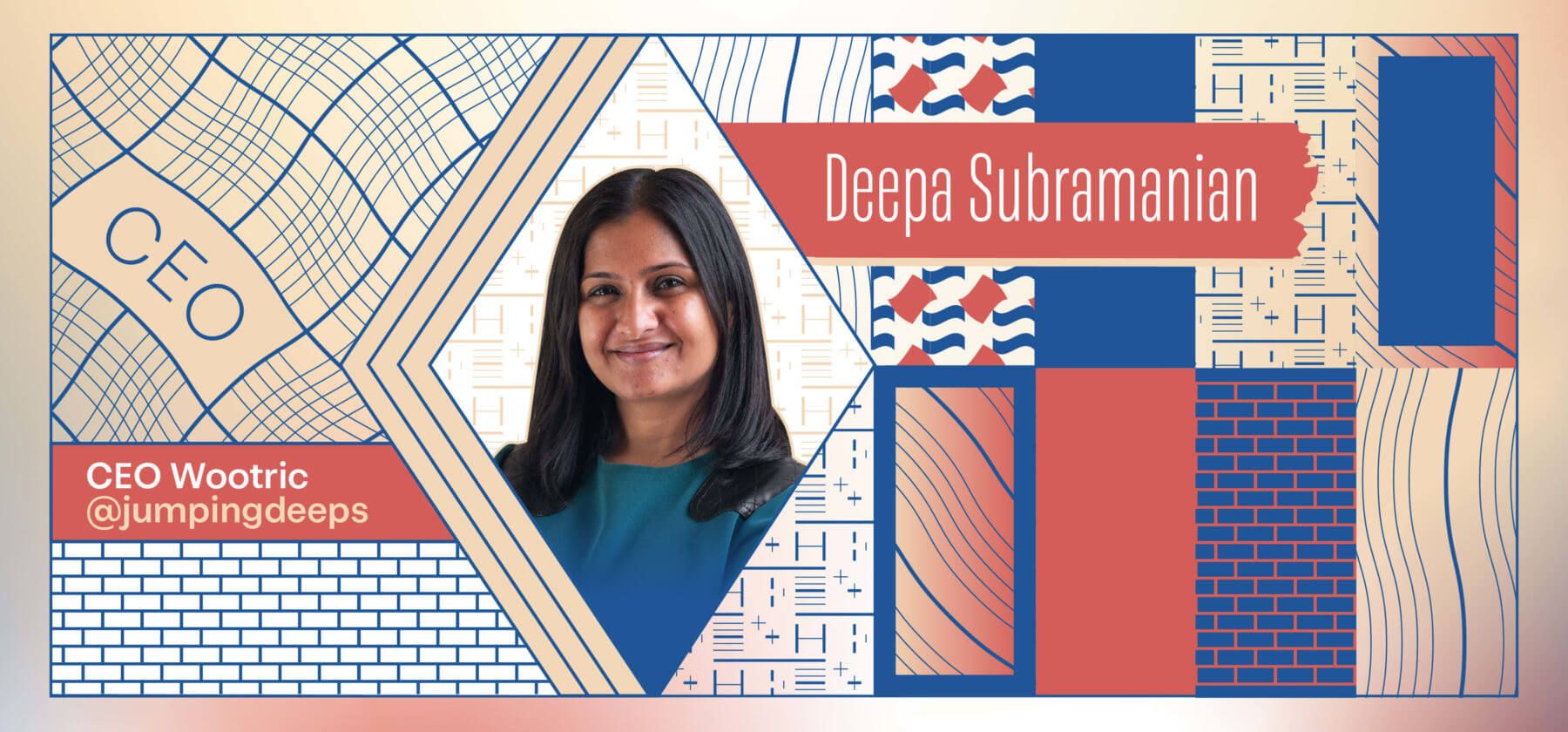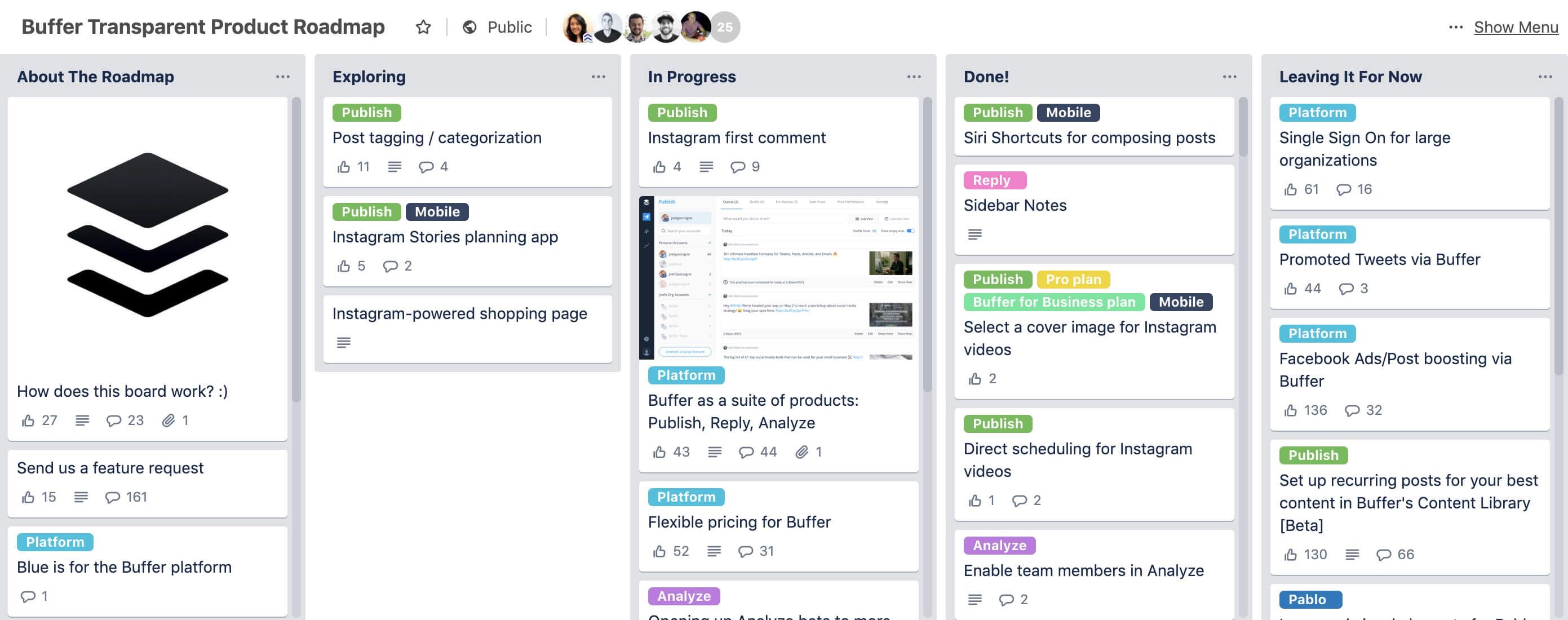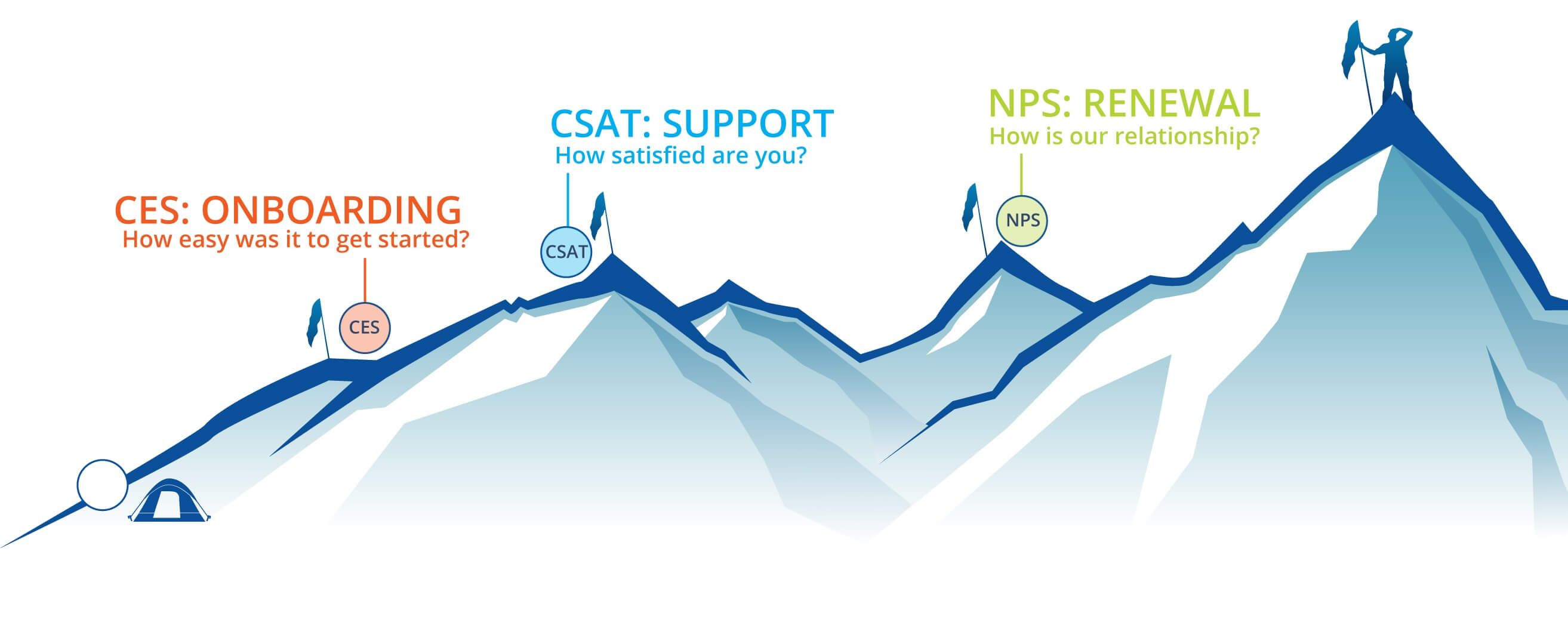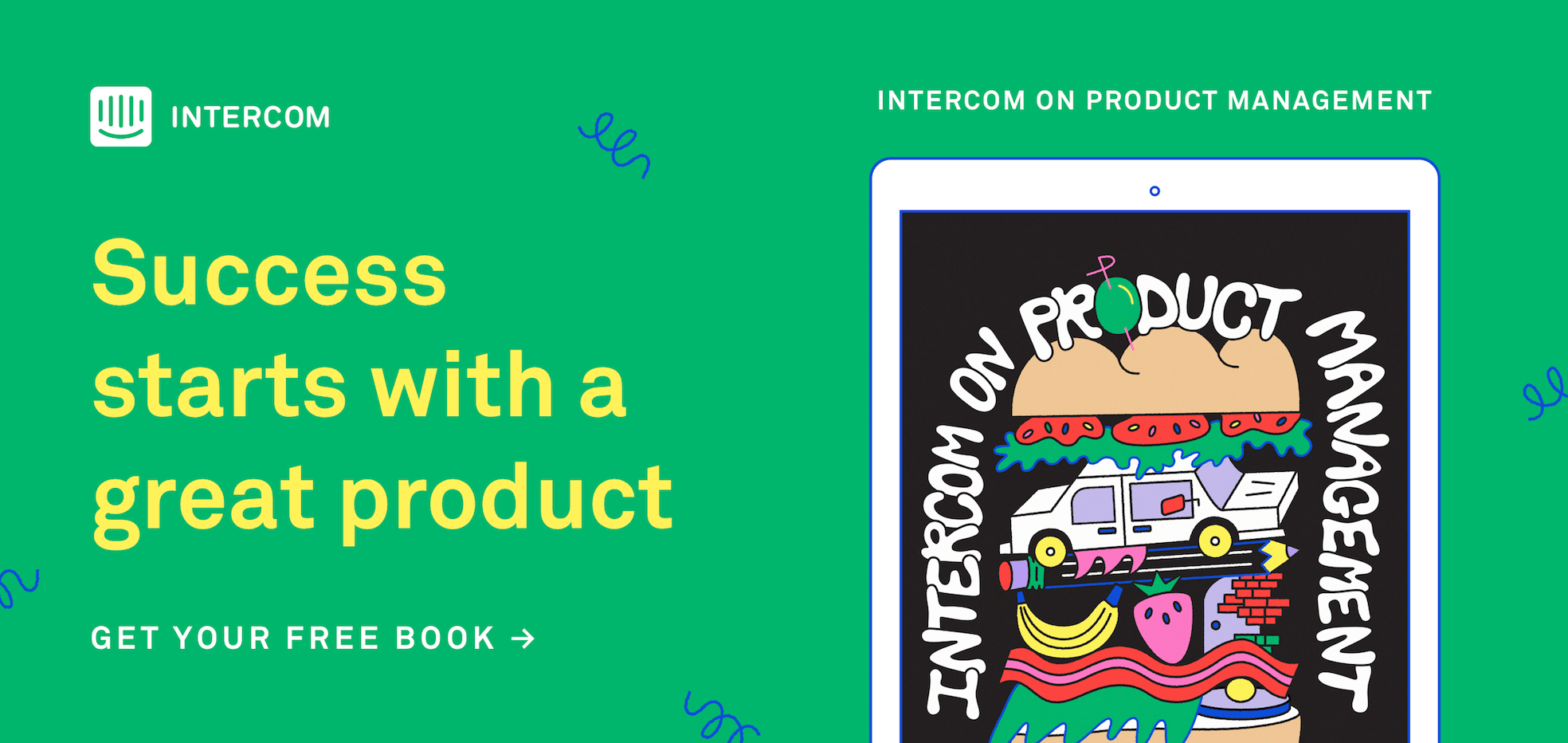
Wootric’s Deepa Subramanian on measuring the voice of the customer
This week’s podcast revisits an earlier conversation we had that looks at the importance of measuring the voice of the customer and how to do it.
With everything that’s going on in the world at the moment, we thought it would be timely to hear again from the mind behind Wootric – the experience management tool that allows businesses to measure and boost customer experience. Why? Well because with circumstances changing hour by hour, day by day, now more than ever companies need to keep a pulse check on what’s happening for their customers.
Deepa Subramanian (a graduate of Harvard Law School and a veteran of Salesforce) set out to improve businesses’ understanding of the customer voice by co-founding Wootric, a platform that offers a range of feedback collection and analysis tools to help teams gain deeper, more relevant insights into their users’ desires and complaints. It’s all part of a customer-centric philosophy that emphasizes empathy and self-awareness over a staid corporate vision.
Last year, she spoke with Paige Costello, our former Director of Product Management about everything from ways to prioritize customer experience to going all-in on machine learning. Short on time? Here are five quick takeaways:
- To be truly customer centric, companies need to break down organizational silos, understand how to collect feedback at the right time in the right place and invest in cultural transformation.
- To understand the voice of the customer, companies need to measure three critical points in the user experience: onboarding effort, support satisfaction and an overall net promotion score that measures relationship health.
- It’s time for product teams to go from being revenue-led or product-led to being customer-led. The customer defines the problem, but it’s on you to do root-cause analysis and solve the problem with your technology.
- When building machine learning, large generic training models aren’t always the best. Wootric has been able to produce better results using small datasets and building different models for different industries.
- While there’s always room for carefully executed customer surveys, companies need to think about creative ways to harvest customer feedback from all types of customer interactions.
If you enjoy our conversation, check out more episodes of our podcast. You can subscribe on iTunes, stream on Spotify or grab the RSS feed in your player of choice. What follows is a lightly edited transcript of the episode.
Paige: Deepa, welcome to the show. Tell us more about your career journey and how you found yourself founding Wootric.
Deepa: I love telling this story. I started in technology at Salesforce – I was their first female engineer and learned early on how valuable it can be to build a company from the perspective of your customer. Salesforce did this not only for their product; their entire revenue model is built around being easy and convenient for the customer. I think companies are realizing that the days of revenue-led, product-led company-building is over, and especially as you digitally transform, customer centricity is going to be your competitive advantage.
So I started there, and then I took a couple of detours, which will make sense someday. I went to law school, and I worked in technology transactions for a couple of years. And then the entrepreneurial bug bit, and I started a bagel company in San Francisco – which as far as product-market fit goes, it was so amazingly easy to get there. We had lines out the door the first time I put up a little blackboard. But I learned a lot from that, especially about how valuable it is to engage with your customer in the middle of the experience. There’s nothing like that person taking a bite of this bagel that you’ve just made and giving you feedback, like, “There’s too much cream cheese,” or, “This is too expensive.” There were a lot of takeaways.
Eventually I had to shut Schmendrick’s, my bagel company, for personal health reasons. But in reality I’m a technologist, and I should have been in technology all along. I feel much more at home at Wootric. The genesis for Wootric really came about from a conversation I had with Patrick Moran, then Chief Marketing Officer of New Relic. They’re a very successful company with a huge user base, but when I asked him one day what his biggest issue was, he said, “I have no idea how happy my user base is.” I found this really confusing, so I asked, “Well, how do you keep tabs on them?” And he said, “Oh, you know, every three or six months we send them an email survey.” And immediately I’m like, “Oh god, I’ve never answered an email survey.” Have you, Paige?
Paige: I avoid them!
Deepa: Patrick goes on to say, “We get back all these spreadsheets full of data and then I don’t know what to do with it.” New Relic is a developer platform, and their users engage with them primarily in product. So I said, “Hey, what if I built an easy way for you to engage with your customers in the product and let’s use something well understood and lightweight, like Net Promoter Score.” I started prototyping this for him.
Meanwhile, I did a little bit of market research, and I found this problem wasn’t unique to New Relic or SaaS companies or really any size of business. Every business everywhere needs to keep a pulse on all of their users, their buyers, their product users – and they need to do it at every point in the customer journey.
“Every business everywhere needs to keep a pulse on all of their users, their buyers, their product users – and they need to do it at every point in the customer journey”
I got very lucky in that an old friend of mine, Jessica Pfeiffer, whose background is in sales and B2B marketing, came aboard to be my co-founder. We have very complementary skill sets, and we have been working on Wootric for four years now. So what started as an in-app Net Promoter Score (NPS) service is now a framework around very rigorous customer experience metrics, customer effort scores and customer satisfaction (CSAT). We tie them to your CRM events so you’re triggering the measurement at the right point and the right time. Our approach to service has always been from the perspective of the person giving feedback. So we make that experience really beautiful, lightweight and rigorous so the feedback you collect is high quality.
In the last year, we’ve really invested in machine learning and AI to shift the discussion from “What are my customers saying?” to “What are they doing in my product with my other business interactions?” and “Why are they doing it?” AI really helps you tease apart all of the qualitative customer feedback you’re getting – whether through surveys or your support tickets – and it elevates the voice of the customer outside of organizational silos to a strategic decision maker.
What’s keeping companies from prioritizing customer experience?
Paige: It sounds like you want businesses to make customer experience a top priority. That seems easy to say but quite tough to do. I’d love to hear more about what’s preventing businesses today from doing that.
Deepa: I see a couple of things that stand in the way of companies being able to do this at the organizational level. Most businesses are still very siloed. As a customer, I don’t care if I’m interacting with support or sales or customer success or marketing. All I’m thinking is: “You know me. Get my story straight, and don’t make it hard for me.” Elevating the voice of the customer out of these silos is really important.
“Elevating the voice of the customer out of these silos is really important”
Another thing we encounter is that, just as companies are discovering how important customer feedback is, survey fatigue is also setting in. It’s not just about sending surveys; you’re going to overwhelm customers if that’s the only approach you take. Customers love giving feedback, but you have to build that experience very carefully. You want to be smart about asking the right question at the right time in the right place to the right customer. You know so much about this customer. Be really creative about reaching them or engaging with them.
And then finally, it’s cultural – and cultural transformation is really hard. There’s no one way to do it. There’s no top-down mandate. It takes time and courage and persistence and tools that help you tease apart the noise from really what’s important to customer centricity.
Paige: What are the ingredients for scaling a personal customer feedback model? As you know, it’s not super scalable to have one-to-one conversations, especially as businesses grow. We really have to balance being personal versus using automation to gather customer feedback.
Deepa: The easy answer is automation, right? But again, you need to come at it from the user’s perspective. When we think about automation, we’re talking about having systems in place that ensure someone is not getting surveyed too often and that you’re in fact asking the right question. If you’ve only seen me interact with you via chat, it’s highly unlikely that if you reach out by email, I’m going to respond to you. You already know this about me as a customer. So you have to be really smart and use automation and operational data to your advantage.
The other perspective to this is that there are ways to let the customer know they’ve been heard. One thing we encourage for those businesses that work with us and have high volumes of customers (e.g. a consumer enterprise like DocuSign or GrubHub) is to make their customer feedback programs public and tell their communities you’re doing this.

Buffer’s public customer feedback program
When you get feedback back from customers, blog about what you’ve learned. And then by all means tie this to your product management tools. When you actually build a feature someone has asked for, there’s nothing that makes a customer more happy than hearing: “We listened to you. We added a new cream cheese flavor.” There are ways to make them feel heard even if the first interaction feels automated.
Measuring the customer journey
Paige: You mentioned the importance of asking the right questions. I’d love to hear more about how you help people who are using Wootric do that, because it’s a little scary. It’s easy to get wrong.
Deepa: I’ll tell you where we are today in this approach. We’re not SurveyMonkey. We’re not going to make you think up an entire “Voice of the Customer” (VoC) program. We have frameworks and defaults that will help you navigate all of the pitfalls of survey fatigue.
We’ve found that for SaaS companies there are really three critical journey points you should absolutely engage with your customers on for feedback. The first is onboarding, and the absolute best way to get a grip on onboarding is to measure customer effort at that point. So we recommend that at the onboarding stage, depending on your product, maybe you ask a single-question customer effort survey (CES) in-product.
At the same time, there are a lot of support interactions going on, and at the end of a support interaction, it’s a fantastic time to ask about CSAT: “How satisfied are you with the agent and with the support interaction?” Intercom does a very fun emoji thing. I think that’s a journey point that you do not want to miss feedback on.
But with these two in the background, over the course of your relationship with your SaaS customer, about once or twice a year, you want relationship-based feedback through a metric like NPS.

What to measure in the user journey
And you want to do this in a way that they’re not receiving two emails in the same week. They’re not receiving a ping and an SMS. We have all of the background intelligence to make sure your measurement is executed in a really lightweight way.
So this is one framework that we use to guide SaaS businesses to execute a lean, but effective VoC program. And of course, as your business gets more complicated, the journey changes, but the approach is really the same. When you ask them, reduce bias, and then it’s really about finding a benchmark, finding out what’s going on and improving your scores.
Paige: I’ve heard about NPS and CSAT and used them quite a bit in the past, but I’d love to hear a little bit more about how you measure customer effort.
Deepa: Like NPS, there’s a quantitative piece and qualitative piece that’s driven off the question, “How easy was it for you to do X, Y or Z? How easy was it for you to check out?” It’s traditionally a 0-to-7 scale, followed by the question, “Tell us why you gave us the score that you did.” Ease is particularly salient to onboarding.
There was this one particular customer who implemented CES for their onboarding, and they discovered whenever one of their customers was using a custom solution versus a standard solution, their CES scores were so low. When they engaged with the qualitative feedback, they discovered that it was more cost effective for the company to actually set up professional services when customers with custom solutions needed onboarding. Now, if you weren’t checking in with the customer at this time, you probably would have missed this business-changing strategic decision.
Building a customer-led product roadmap
Paige: I’d love to hear more about the toolset that helps product teams really get the end-to-end feedback they need – and allows them to build a roadmap that really fits the business.
Deepa: This can sound like an overwhelming answer, but every tool you use can give you information about the customer experience. So your behavioral analytics are relevant, your support ticket data are relevant, your Intercom attributes, that CRM metadata are relevant. So all of these tools should be factoring into your understanding of the customer’s experience.
But if that sounds overwhelming, I think a very lightweight, traditional survey tool is not going to hurt. Just be cognizant of not asking too much of your customer. You’ve got to start somewhere.
But I’m a product leader, and for me, being able to bring together something as simple as NPS by the devices that my users access my product on is really revealing. That only happens when you can bring together various data sources from different tools.
Think holistically about all of your customer data sources.
“The customer is defining the problem space, and it’s on you to discover the root issues and causes behind their feedback”
Paige: You spoke a little bit about the evolution of companies from being revenue led to product led and now, trying to bring them into a new era of being customer led. I find that newer PMs really tend to be naturally customer-led, because it’s a source of meaning and insight. But sometimes they can be a little bit more likely to translate the exact feedback they get into a feature request. The customer feedback becomes the to-do list, which becomes the roadmap. I’d love to hear a little bit more about how you think about customer led companies and the strategic vision there.
Deepa: I think it’s a really important question and a trap you can fall into – prioritizing your roadmap based on just what the customer’s asking for. Here’s a better way for entrepreneurs and company builders to think about the roadmap: innovation is your responsibility, but you don’t innovate in a vacuum. The customer is defining the problem space, and it’s on you to discover the root issues and causes behind their feedback and solve for the whys and the problems with your product or technology. That’s what I mean by customer-led.
Lessons on building machine learning
Paige: I’d love to hear about what it really looked like when your teams went all-in on machine learning (ML) and the lessons you’ve taken away building it into your platform.
Deepa: It was chaos! No, but one thing about our approach that’s helpful to know is that there are a lot of out-of-the-box text and sentiment analysis tools available. This is a wonderful thing. Google, Amazon and Microsoft all offer these tools now, but 10 years ago we wouldn’t be able to do this with a high quality. The real danger then – and this is the first lesson we learned and it bit us hard – is that they are trained for corpuses that are very different from what customer feedback looks like.
Generic solutions and generic models don’t work. Customers have a very specialized way of communicating with you. Furthermore, customers in different industries have a very different way of communicating with you. So we realized very early on if we were going to build something high quality, we would have to take an industry-based approach. All of our machine models are different for SaaS, for eCommerce, for insurance-based healthcare, etc. This allows our customers to give us a data source (like their surveys, app store reviews or Intercom support tickets), and we can classify it out of the box without having to train on your data or your industry. And the results have been quite amazing to see. So that’s one lesson.
Your models must reflect the tenor and the lexicon and even the length of the texts that you’re analyzing. We’re a small team and everybody knows that larger training data volumes lead to better results. We don’t have the luxury of creating these large volumes either by paying for it or classifying ourselves, so we had to be really creative about working with small datasets.
Paige: What advice do you have product teams working on ML?
Deepa: Try to build your models for both the specific space and speaker. Whoever’s generating the text probably has patterns of speech, a lexicon – all of which are really important. And the other thing is, don’t be intimidated by large competitors who claim to have better models because they have better training datasets. There are creative ways to get to high quality models without that.
Paige: It was really fun watching the teams here at Intercom build their first ML product. When we launched Resolution Bot, I think we experienced quite a few of the issues you just described, so they definitely resonate.
Wootric’s vision
Paige: What’s next for the Wootric product team?
Deepa: I love this question. Our vision has always been twofold. As you may have seen, the dynamic is shifting away from surveys as the only source of a voice of the customer. With that in mind, we are really starting see the market ask for how we can harvest customer feedback from all of the other customer data sources we have – especially support conversations for product teams. There’s so much there, and the insights are shifting away from the traditional survey space.
But that being said, there’s always room for a carefully executed survey program. But I think adaptive surveys (surveys that can respond to the questions or issues customers are raising), and getting the right time, the right question, the right place right are all hugely important for us. And I would say the end goal for us is to see a company transform into being customer-centric. If we can drive more action and more organizational cohesion that would be the holy grail.
“The dynamic is shifting away from surveys as the only source of a voice of the customer”
Paige: Wootric’s been around since 2013, and I’m pretty impressed by how much the team’s accomplished in that time. What’s your advice for other founders and leaders about really building out a team that will last?
Deepa: I’m always honored to share this, but we’ve been around since 2013 and have never lost anyone on the team. I’m so grateful for that. But if I reflect on it, there were a couple of lessons here: We developed our core values very, very early on in the company, and we hire for those values. Not in an exclusive way – it’s an additive culture. And one thing I really treasure is that everybody brings their whole selves to work, whether it’s Lisa (our VP of Marketing), who loves to talk about how dance inspires her, or myself as a new mother who’s kind of obsessed with child development. Everybody gets to be their entire selves at work. I think that’s really important for us and my team.
Another thing that’s been a great for us is that we have a DNA of customer centricity. We use Intercom as a sacred place for everyone on the team. Everyone is on it, everyone is talking to the customer, and I think you can’t build what we’re building well without that.
Of course we’ve made mistakes and I would share this one: We’re a lean team, but it’s good to give your team some stability. Don’t move offices all the time. There was a period when we were moving every six months, and this seems like a small thing because at a startup you want to be agile, and you want to save money, but it’s important to create space for people to grow and develop together.
Paige: Thank you so much Deepa. It’s been a pleasure. Where can people stay up to date on your thinking?
Deepa: Thanks, Paige; it’s been really lovely to chat. I’m available on Twitter at @jumpingdeeps. I say a few things on LinkedIn and obviously the Wootric blog.








